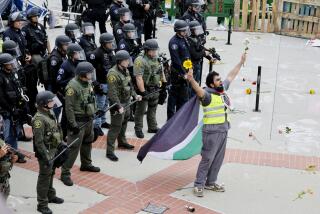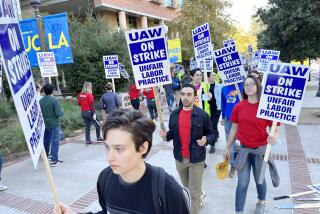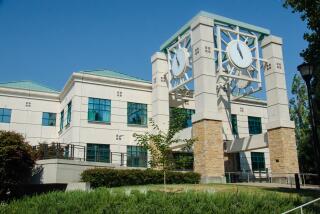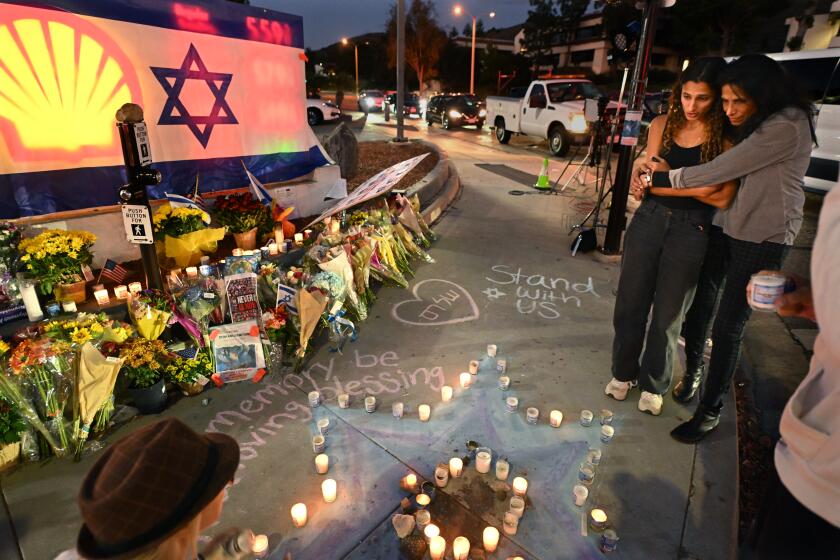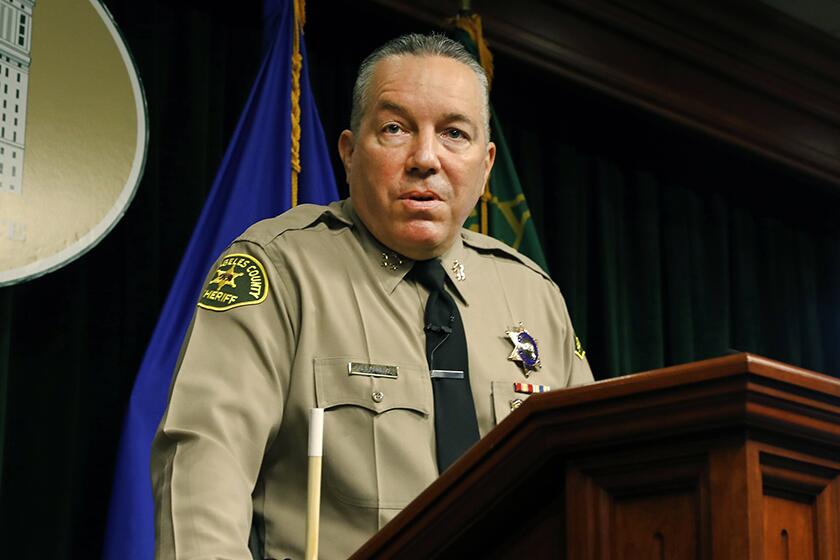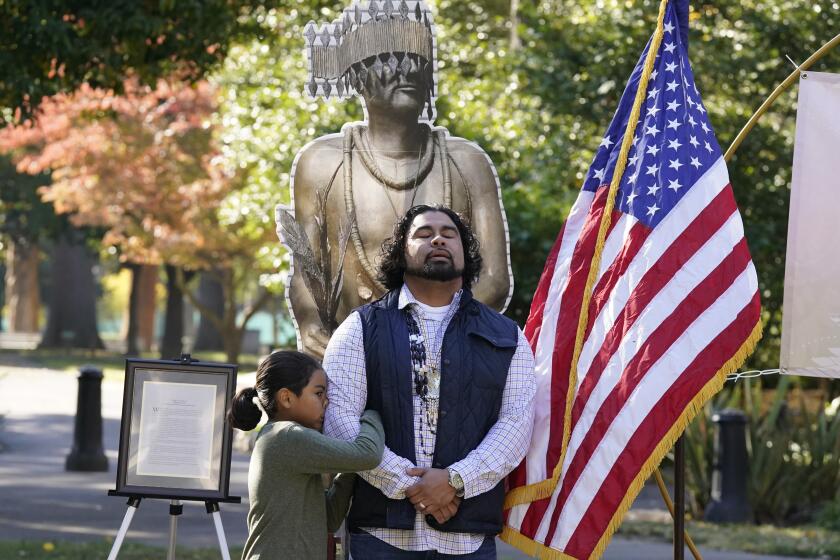Science Thaws ‘Cold Cases,’ as O.C. Slaying Trial Shows
Witnesses have died or disappeared. Pieces of evidence are lost. Even the murder scene has been demolished.
But the oldest “cold case” in Orange County history to result in murder charges went to trial Monday, with prosecutors arguing that they can prove who was behind the 1975 shooting of Larry Wheelock.
The case underscores the challenge in bringing a cold case to trial--one that is facing lawyers and judges more than ever as advances in DNA and fingerprint technology allow detectives to crack cases previously thought unsolvable.
Across the nation, police have touted cutting-edge forensic technology for cracking cases sometimes more than a decade old. While no one is tracking arrests in cold cases, the trend is calling attention to itself in Orange County. In Santa Ana alone, police in 1999 and 2000 made arrests in 22 such cases.
But it falls to prosecutors to convert those arrests into convictions. Often, that is no easy task. Deputy district attorneys must try to make a case when witnesses have moved, even died, and when evidence has been destroyed, not to mention dealing with the problem of fading memories.
“The longer it takes to bring these cases to trial, the more disadvantaged we are,” said Assistant Dist. Atty. Lew Rosenblum, who oversees county homicide cases.
On Monday, Wheelock’s stepson, Jacob Scott, now 29, told jurors how as a 4-year-old boy he watched as his stepfather was shot by an intruder.
Prosecutors hope the recollections, some of them admittedly hazy, will be enough to bolster fingerprint evidence they say links Larry Donnell Paige to the killing.
Paige’s attorneys have tried unsuccessfully to have the charges thrown out, saying the quarter-century gap between the killing and the trial makes it virtually impossible to prove what Paige really was doing the night of the murder.
Paige, they argue, had nothing to do with the slaying but now finds himself being railroaded by technology that cannot provide the full story. And they vow to attack the fingerprint evidence as unreliable.
Deputy Public Defender Ed Eisler on Monday chipped away at Scott’s story, highlighting the conflicts in accounts he has given since the crime in an effort to undermine prosecutors’ version of what happened that night.
“It is a tale wrapped in the mists of time from events 25 years ago,” Eisler said in his opening address.
Wheelock was gunned down in the family’s Santa Ana apartment on Oct. 18, 1975. Fingerprints found at the Bristol Street home were smudged and barely readable. Without a match, the case gathered dust.
Last year, new digital technology helped police produce clearer and larger images of the prints, which were lifted from Wheelock’s car and a paper bag containing beer cans. And investigators say they matched those images against fingerprints from Paige, a Long Beach man with a criminal record of minor thefts and drug sales.
In the quarter-century it took authorities to arrest him on suspicion of Wheelock’s slaying, 12 witnesses from the original police investigation have died, 95 have moved, and the car from which one of Paige’s prints was reportedly found is gone, according to defense attorneys.
On Monday, as Paige sat dressed in a blue button-down shirt and tie, the courtroom evidence was the stuff of history.
A black-and-white photo of Larry Wheelock smiled down from a television screen. Prosecutor Chris Kralick joked in court that digital cameras didn’t exist when crime scene investigators photographed Wheelock’s apartment that night.
Bill Ehart, who as a 24-year-old rookie officer stood guard at the crime scene, is now a sergeant with thinning gray hair. Even he testified that he had trouble remembering what happened that night without looking at his crime report.
Paige’s lawyer argued in court that many of Scott’s observations from 25 years ago have differed from statements he has given to police more recently. Scott’s memory, he told jurors, had been influenced from reading the police report of the murder and talking to others.
Moreover, Eisler argued, forensic evidence against Paige relied on smudged fingerprints that could very well belong to someone else.
Kralick, however, told jurors the evidence shows that Paige was one of two men who robbed and shot Wheelock. Paige, the prosecutor said, was not the gunman but is equally responsible for the killing because he helped distract the young Scott during the ordeal.
Scott’s memory, Kralick acknowledged, is hardly flawless. Many of the details from that night are fuzzy or forgotten. But Kralick said Scott’s recollections are sound when it comes to the most important event: the shooting.
Once Scott took the stand, prosecutors made the unusual decision not to ask him to identify Paige in court. Indeed, in interviews at the time of the killing, Scott said the gunman was named Gary and his accomplice was Joe.
Scott acknowledged several times that he had forgotten details about the night. But under tough questioning, he insisted that he recalled carrying a bag of beer belonging to the two intruders up to his apartment, then playing under a stairwell with the man he knew as Joe. While they were there, he said, he saw his stepfather gunned down in the hallway.
Scott testified that the man who had been playing with him saw the gunman raise his weapon and shouted at him to stop. But Kralick said the man’s attempts were too little, too late.
“Despite your protestations of ‘Don’t do it! Don’t do it!’ it’s too late,” the prosecutor said, addressing his comments to Paige. “You’re already an aider and abettor.”
More to Read
Start your day right
Sign up for Essential California for news, features and recommendations from the L.A. Times and beyond in your inbox six days a week.
You may occasionally receive promotional content from the Los Angeles Times.
